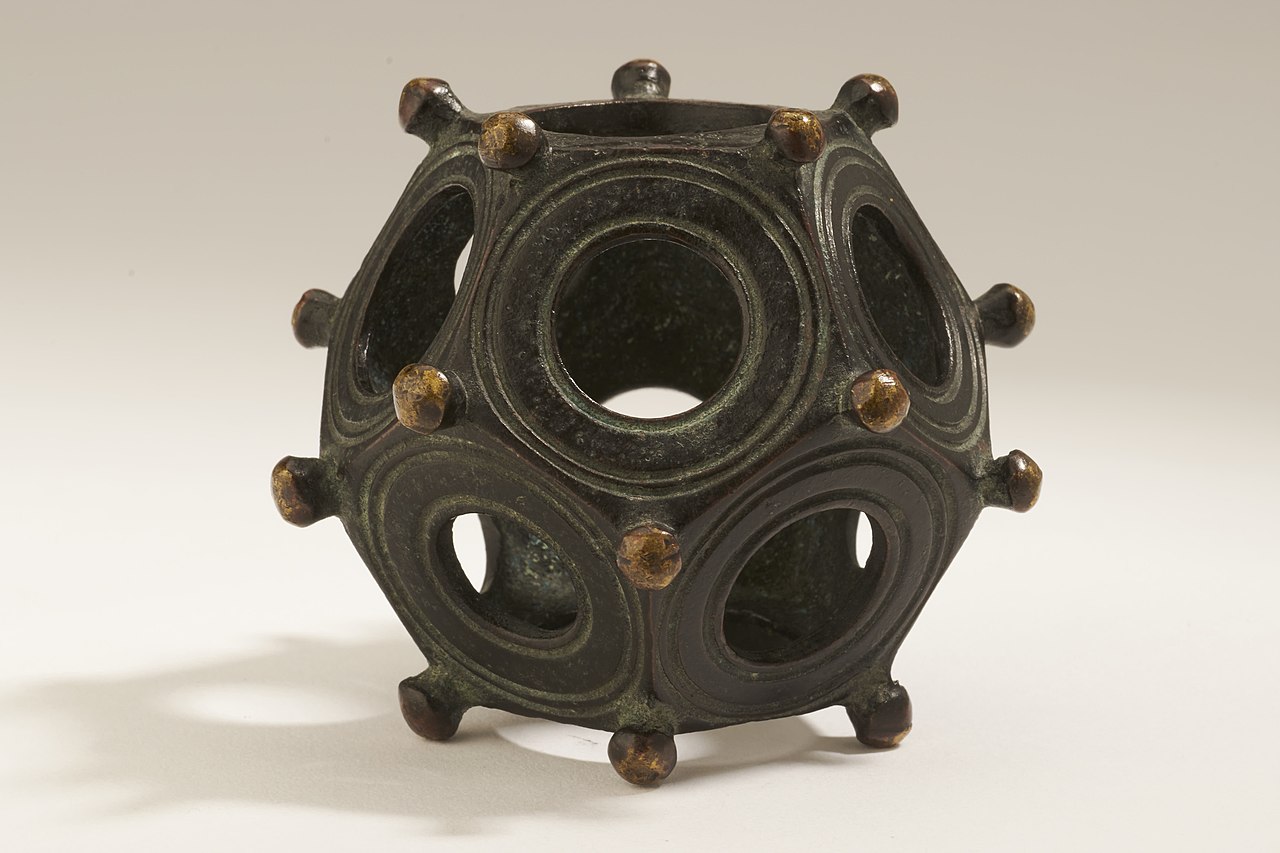
A Roman dodecahedron or Gallo-Roman dodecahedron is a small hollow object made of copper alloy which has been cast into a dodecahedral shape: twelve flat pentagonal faces, each face having a circular hole of varying diameter in the middle, the holes connecting to the hollow center. Roman dodecahedra date from the 2nd to 4th centuries AD.
No mention of dodecahedrons has been found in contemporary accounts or pictures of the time. Speculated uses include as a candlestick holder (wax was found inside two examples); dice; survey instruments for estimating distances to (or sizes of) distant objects; devices for determining the optimal sowing date for winter grain; gauges to calibrate water pipes, legionary standard bases, a coin measuring device for counterfeit detection. Use as a measuring instrument of any kind seems improbable since the dodecahedra were not standardized and come in many sizes and arrangements of their openings. It has also been suggested that they may have been religious artifacts, or even fortune-telling devices. This latter speculation is based on the fact that most of the examples have been found in Gallo-Roman sites. Several dodecahedra were found in coin hoards, providing evidence that their owners considered them valuable objects.